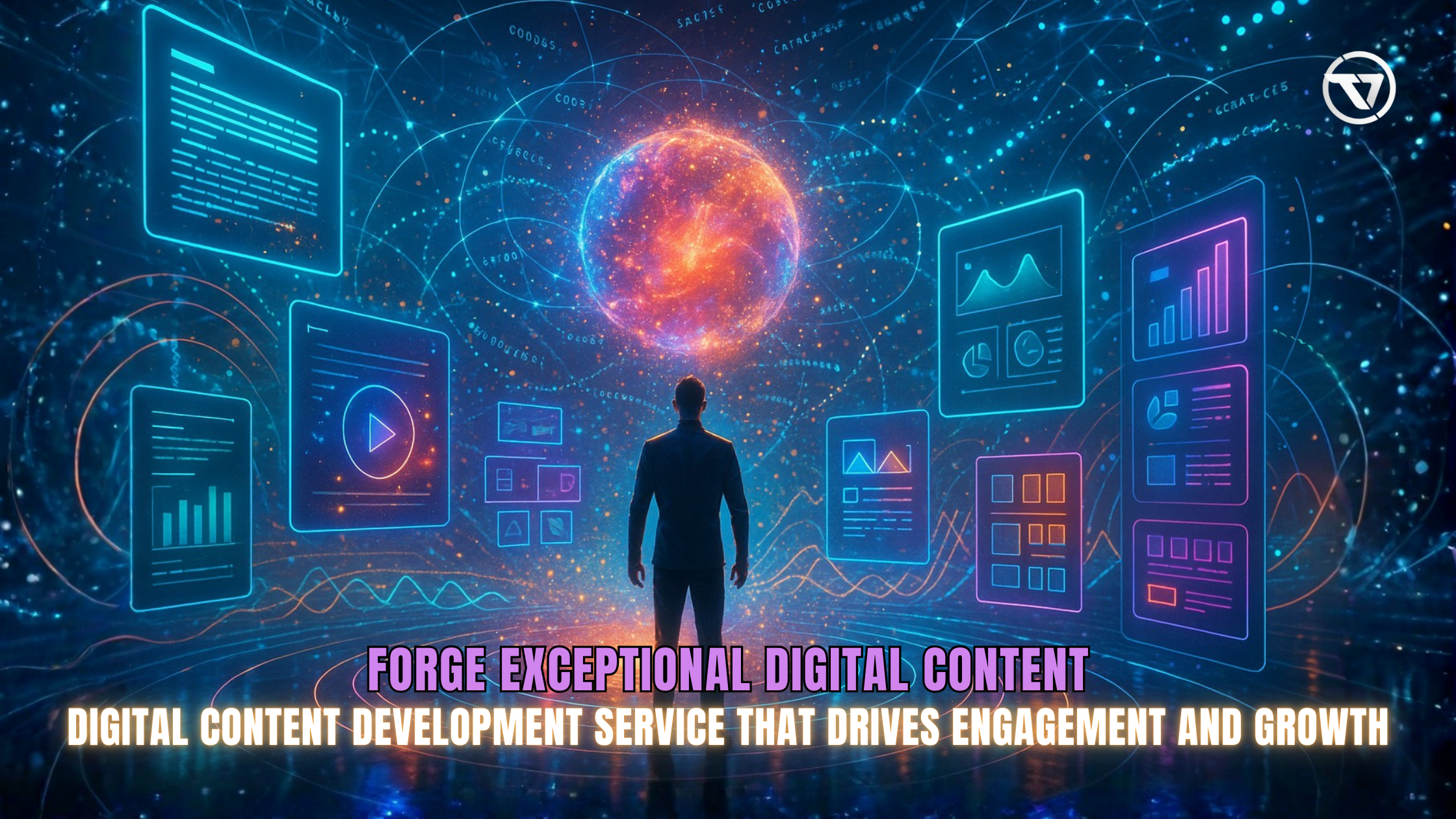Top 6 AI Transcription Tools of 2024: A Revolutionary Step to Transcribe Audio to Text

In the era of information, open communication and the transfer of data are the keys to success. Be it for business meetings, interviews, important speeches, doctors’ suggestions, or lectures, the process of converting audio or video to text needs to be fast and accurate. Conveying the right information and transcribing real-time data to foster knowledge is the primary aim of blending artificial intelligence and manual transcription services. Conversely, traditional transcription services were solely dependent on manual writing and hence were more prone to consistent errors. Besides, the overall process to record and transcribing audio and video files was time-consuming and expensive. With the emergence of AI-powered transcription solutions, large video or audio files can be transcribed within a while ensuring the accuracy and detail of information. AI transcription software, leveraging the power of ‘Machine Learning algorithms (ML)’ and ‘Natural Language Processing (NLP)’ is efficient enough to transform large volumes of recordings into written text ensuring a successful exchange of information. This blog explores the benefits of AI-powered transcription services, their evolution with time, and the challenges associated with incorporating AI in traditional transcription along with highlighting the 6 best AI transcription tools of 2024.
The Growth of AI Transcription Tools: Artificial Intelligence in Transcription Services

AI transcription refers to an amalgamation of automation algorithms, transformative technology, and human intelligence aiming to convert video and audio files while improving the accessibility, efficiency, and affordability of transcribing audio clips. The automation, harnessing the power of machine learning algorithms, made the tedious procedure of transcribing audio and video recordings easier and more accurate. The versatile application of automatic transcription spans across multiple industries, contributing advantages regarding spread, multilingual capabilities, and accuracy. Feature like NLP lets you transcribe and analyze audio, recorded in different languages. With the integration of AI and NLP, AI-powered transcription services adhere to a promising future reflecting transcription services as an integral part of the digital landscape. One thing we can be sure of- is that AI-powered service transcription is going to persist in the market, reshaping the process of transcribing speech to text. AI transcribers should be encouraged to brush up their skills while providing specific prompts to top AI transcription tools which is essential to generate error-free transcripts.
What is AI Transcription Services?
Transcription services involve the process of turning large audio or video files into written documents ensuring a less time-consuming transfer of important information. Unlike traditional methods, real-time AI transcription, with the help of intuitive tools, can transcribe video and audio files in written texts within minutes while enhancing the accuracy of data. Machine learning models and advanced algorithms not only convert audio files into automated written texts but also ensure the right analysis of data to meet client requirements. The process embraces stages like recording audio or video and converting the files into written texts through AI-aided features like ‘natural language processing (NLP)‘ and ‘speech recognition’.
The transition from Manual to Automated Transcription
The emergence of ‘Voice Recognition services‘ dates back to the 1950s, which opened up the avenue for an accurate and fast process of converting audio files to written texts. The introduction of NLP and machine learning algorithms facilitated the method of recognizing audio contents containing foreign languages and generating accurate written texts in familiar languages. Historically, the traditional process of transcription refers to a manual process involving human transcribers to listen to large audio recordings and transcribe those into written texts. The respective approach was excessively time-consuming, prone to generate erroneous documents, and required expenses to hire human transcribers. A drastic change was initiated with the incorporation of artificial intelligence into transcription services that reduced the costs and turnaround times, ensuring the accessibility of transcription among a wider audience.
Benefits of Leveraging AI Transcribers

#1. Consistency and Accuracy
Machine Learning (ML) and Natural Language Processing (NLP) are the game changers in the field of AI voice recognition, initiating fascinating transformations regarding conventions from video or audio to text. The consistency and accuracy of AI-aided software are enhanced by transcribing more data and harnessing the proper use of ML and NLP. Proper input into AI transcription software guarantees a precise and reliable output, lowering the risks of mistakes associated with manual transcription.
#2. Efficiency and Speed
The combination of speed, accuracy, and efficiency are primary keys to generating accurately transcribed documents which reflects the commitment of advanced AI-powered transcription tools. ‘Speed’ is one of the most notable benefits of AI transcription services which has been possible through the ability of AI features to process large volumes of audio data within a fraction of the time. Real-time transcriptions, assisted by AI features are feasible and cost-effective enough to meet the business goals of time-sensitive industries, including legal services, and journalism.
#3. Cost-Effectiveness
Reducing operational costs is one of the major targets of businesses to enhance profit generation while retaining quality. AI-aided transcription tools can transcribe large volumes of audio and video files and convert the data into error-free written texts. This omits the requirement of hiring manual laborers providing a cost-effective business strategy ensuring high profit. The cost-effectiveness widens the access of transcription services among mass enabling even small businesses to harness effective transcription tools.
#4. Multilingual Capabilities
The Natural Language Processing (NLP) algorithm, integrated into the AI-aided transcription tools enables the software to support multiple languages, enhancing its applicability on a global scale. By resolving the language barriers, AI tools adhere to covert audio or video files, consisting of any language into written and understandable texts that ensure fast and accurate exchange of data. An international reach can be achieved by small businesses, leveraging the power of multilingual capabilities of these AI-powered transcription tools.
6 Best AI Transcription Tools of 2024: Affirmation of Accurate Transcription

#1. Trint
Trint plays a great role in transcribing video and audio files into written texts within minutes, providing a feasible solution to transcribe large files. Trint’s advanced features include ‘AI speech technology’, ‘Editing’, ‘Live transcription’, and Custom Dictionary’. Trint, a collaborative editing platform enables users to edit and highlight transcriptions in an easy way facilitating the transcription process of conveying important data. Trint has both paid plans and free plans which you can select depending on the file size and frequency of your requirement to transcribe data.
#2. Sonix
Through Sonix, large video and audio files are converted into text, harnessing the power of machine learning algorithms. This automated AI transcription tool is widely popular for its accuracy and speed. Sonix also supports multiple file formats utilizing the advanced features of adaptability, offering an interactive editor to edit transcriptions and facilitate easy review.
#3. Google Cloud Speech-to-Text
Google Cloud Speech-to-Text makes the utmost use of ‘advanced machine learning models’ while converting audio files to text. Microsoft Teams provided ’60 minutes’ of free use of its transcription services per day through the free plan. The tool supports various languages and it can understand different accents, ensuring real-time transcription capabilities. You can opt for this AI-aided transcription tool for various applications ensuring accuracy and consistency.
#4. Rev.ai
Timely and accurate conversion of video and audio content into text is possible through Rev.ai, leveraging the efficiency of AI tools and automation algorithms. popular features of this tool include a user-friendly interface, integration options, and quick turnaround times with multiple platforms. You can opt for the ’14-day free trial’ of this tool to have a clear idea about its beneficial features.
#5. Google Meet Transcription
Google Meet Transcription refers to a notable feature of real-time AI transcription that provides the facility of live transcription during video meetings. On-screen text, easy accessibility, and accuracy of data are the benefits associated with this AI transcription tool, enhancing open communication and easy transfer of data.
#6. Zoom AI Transcription
Summary of meetings and important data can be transcribed with the ongoing procedure of meeting with great precision and accuracy, leveraging the power of Zoom AI Transcription. This refers to a feature of the ‘Zoom video conferencing platform’ employing artificial intelligence to convert spoken words into text documents during meetings. The tools adhere to the commitment of facilitating the time-consuming process of note-taking and generating post-meeting reviews, enhancing the accessibility of data among a wider audience.
Applications of AI Transcription

Transcription services that offer AI-aided fast and accurate transcripts are widely popular across various industries including Education, Healthcare, Finance, Human Resources, News Media, and so forth. The ability of AI algorithms to identify different languages, convert large video or audio files to written texts, and generate accurate and fast written documents serve the purpose of transferring significant information across multiple industries.
#1. Educational Institutions
Tools like Trint or Sonix assist in generating error-free study materials for students, digitalizing the process of remembering lecture notes. AI-aided transcription software converts lectures, research discussions, and seminars into written documents that can be read like a text. Voice conversations are not required to be handwritten, saving time for students, and allowing them to focus more on study and research papers. Accurate study materials can be generated by leveraging the power of Machine Learning and Natural Language Processing, making the notes accessible for students with hearing impairments. The AI transcripts, created digitally by AI-aided transcription tools are accurate and easy to read, which resolves the issue of forgetting class lectures.
#2. Business Meetings and Conferences
Conferences and meetings lead to a wealth of information in a corporate setting. In parallel to the digital world, video conferencing, video meetings, and virtual discussions are indispensable parts. AI transcription platforms like Google Meet Transcription and Zoom Transcription streamline the process of documenting meeting notes, saving the time to take manual notes. Speaker identification, a distinctive feature of AI transcription software, helps identify the unique voice characteristics of the speaker, leveraging the efficiency of voice biometry. Multinational businesses use AI to transcribe meetings aiming at enhancing collaboration and ensuring that all the key points are faultlessly recorded, harnessing the power of AI meeting assistants.
#3. Content Creation
AI-powered tools and software are enormously popular among content creators, such as writers, journalists, and bloggers to streamline their workflow. The automation algorithm, embedded in AI transcription tools is ideal for content creators to transcribe podcasts, interviews, discussions, and other spoken content. There is ample AI transcription software providing free transcription facilities to transcribe large video or audio files, serving as the fundamental for creating blog posts, articles, and social media content. Through harnessing the power of AI transcription tools, the expenditure for affording human transcription and time to manually write the audio files can be saved, allowing the whole industry of content creation to elevate profit generation.
#4. Legal and Compliance
Maintaining compliance and accuracy, while handling cases is crucial for legal professionals to gain the trust of clients. AI-powered transcription service allows legal professionals to ensure accurate transcription and extensive documentation adhering to the utmost clarity and consistency. The Natural Language Processing (NLP) algorithm of AI transcription tools not only facilitates the process of converting spoken words into texts but also ensures precision for managing legal documents. Video transcription allows professionals, working in law firms, to generate written texts, accurately transcribed from video files. Minute observation of small details regarding case events and including every detail in the written transcripts can be ensured by AI transcription tools, enabling law professionals to summarize cases accurately.
#5. Medical Transcription
AI transcription is a game-changer for the healthcare industry, paving a path for more accurate and timely treatment of patients based on past medical records. The AI transcription helps automate the tedious tasks of recording audio and manually generating written texts from audio or video files. Leveraging the power of AI transcription software, doctors are provided with accurate and real-time data regarding the medical histories of patients, reactions to specific medicines, and overall treatment procedures, allowing them to make informed decisions. Tools like Google Cloud Speech-to-Text play a great role in converting audio files to written texts retaining every minute detail of doctors’ suggestions.
Challenges Associated with AI Incorporation in Transcription Services

#1. Security and Privacy Issues
Irrespective of the versatile benefits associated with AI transcription services, concerns pertinent to data security and privacy arise. Delegating tasks of transcribing sensitive data to professional transcription teams might cause issues like data breaches and data leaks, affecting the privacy of the entire industry. Outsourcing and hiring transcription specialists from outside the company often give rise to security and privacy issues causing hesitation for multiple industries to leverage AI transcription services. It is wise for organizations to implement strong security measures to safeguard confidential information.
#2. Contextual Understanding
Challenges regarding inadequate understanding of data and occasional misinterpretations are still considered major issues associated with AI-aided transcriptions. Despite the extreme advancements in Machine Learning and Natural Language Processing, improper contextual understanding impacts the accuracy of written documents negatively. Regular transcription services are witnessing continuous degradation, aiming at enhancing AI models’ accuracy and contextual understanding in diverse fields.
#3. Inadequate Tuning Regarding Industry-Specific Vocabulary
Specific industries, such as healthcare, journalism, or legal have exclusive vocabularies that might not seem familiar to the AI transcription platforms. Misinterpretation of data, adding wrong information, and excluding important data are several extensive consequences caused by an inappropriate understanding of industry-specific vocabulary. Ongoing development includes fine-tuning AI transcription models to transcribe and understand industry-specific terms, ensuring accuracy and detailed representation of audio or video files in written contexts.
The Future Trends of AI Transcription

#1. Integration with Other Technologies
Combining multiple technologies within specific tools or software paves the path to further improvement and resolving existing shortcomings. The future trends of AI transcription software show the possibility of integrating emerging AI features like Virtual Reality (VR) and Augmented Reality (AR), revolutionizing the process of consuming and interacting with transcribed content. The continuous development highlights the aim of enhancing user experience in terms of converting audio files to written texts.
#2. Experiments with NLP Tools
The utmost development of AI transcription lies in the uninterrupted evolution of natural language processing in search of achieving greater accuracy. Improvements in NLP tools open up opportunities for recognizing unfamiliar languages, enhancing the precision in generating written documents. The continuous improvements in AI tools facilitate the process of explaining tone, context, and subtle linguistic nuances, included in video or audio files.
#3. Enhanced Customization and Adaptability
Adaptability and customization are the focal points of developing AI transcription models based on specific user preferences and industry requirements. Features of adaptability, embedded in AI tools guarantee the relevance and efficiency of AI transcription across diverse applications. Customization enables AI-powered tools to provide different solutions to the exclusive demands of particular industries, enhancing client satisfaction to a great level.
Contribution of Task Virtual to Assist you in Leveraging AI-aided Transcription Services
Explore the efficiency of Task Virtual in the context of market research, utilizing the power of virtual assistance. We are here to provide you with real-time data about the current market trends and clients’ requirements in terms of AI transcription services, based on specific requirements of a particular industry.
We offer three exclusive pricing plans, such as ‘Full Time’, ‘Part Time‘, and ‘Pay As You Go’. You can select the Full-time service only at $6.24 per hour, whereas our Part-time planning begins at a mere $6.99 per hour. Besides this, you will be provided with unlimited service through the Pay-as-you-go service which commences at only $15.00 per hour.





